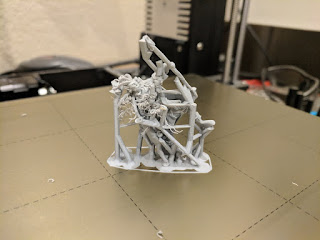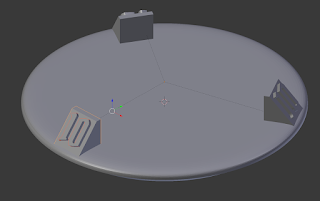Troubleshooting Failed Support: Broken Supports

I've been printing copies of my Inox Shaman models recently, and after my latest print finished, I came home to a bit of a mess. I've done a lot of work with 3D Printing supports , so I don't run into situations like this too often any more... but it obviously still happens sometimes! When I saw this tangled spaghetti mess, I immediately set about trying to figure out what went wrong so that I could modify my support structure and get a better print next time. The first thing that I did was to compare what printed to what it was supposed to look like. Obviously, something failed to print here, but to understand and correct the failure, I had to figure out exactly what part of the model failed to print. So, I pulled up Meshmixer and took a look at the file that I sliced. Comparing the support design in Meshmixer to what ended up on my build plate made it fairly obvious which support branches had failed to print. Of course, identifying what e...





